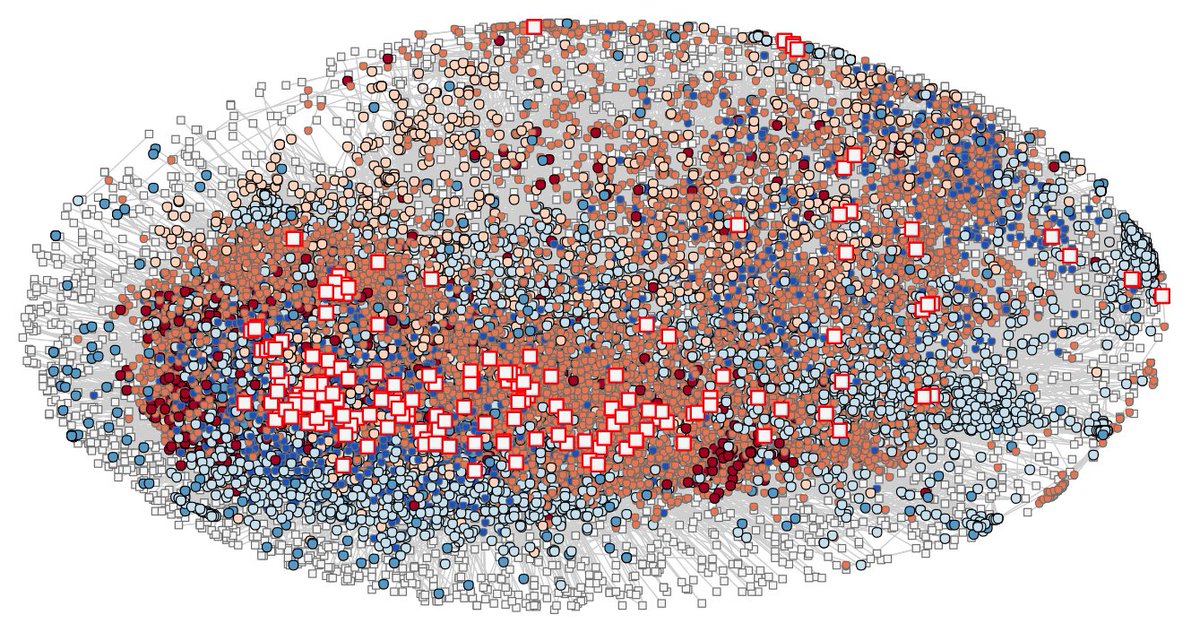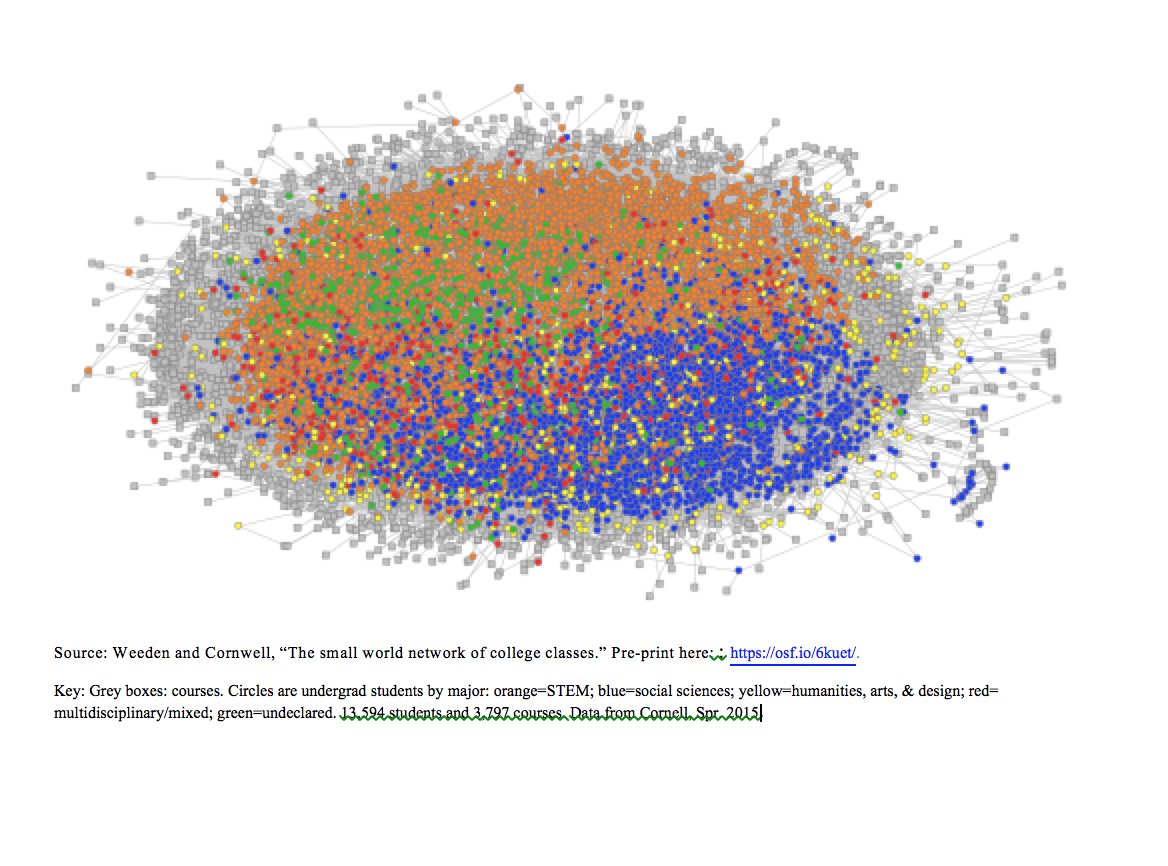My paper with Ben Cornwell on the structure of course enrollment networks @Cornell now out @SociologicalSci (#OA): sociologicalscience.com/articles-v7-9-…
1/n

Teaser for regular readers: last tweets in today's thread reflect on findings in light of "reopening" conversation of last week+. 2/
This increases to 600 students if just look at undergrads, because grad courses typically smaller. 3/
Move over, 6 degrees of Kevin Bacon. 4/
5/
Teaching courses of 30+ online reduces share reached in 3 steps to 21%, increases average path length to 3.8.
A Rorschach result.
6/
7/
Also, Ben and I don't formally model spread, account for <100% attendance or physical distance within classrooms, assess other parameters that affect outbreak risk.
8/
Key questions are about relative risk under different scenarios, how else risk can be reduced.
9/
/fin







